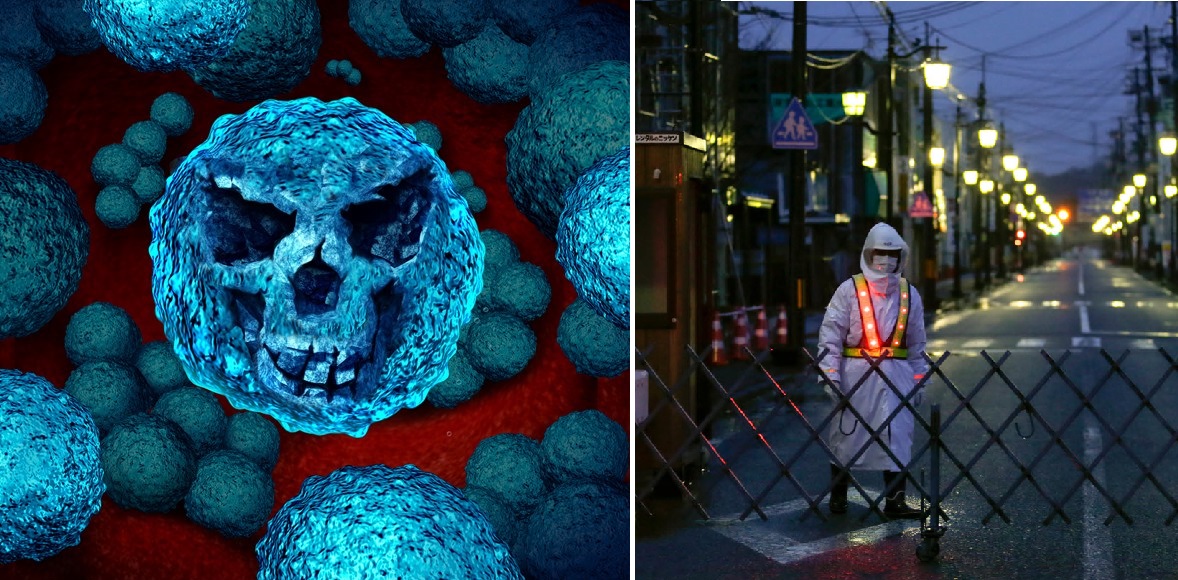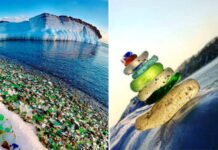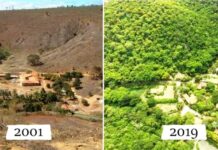Dealing with radioactive waste is a tall order, but the solution could lie with very small microorganisms.
Horonobe, Japan. A reindeer chews absent-mindedly on a bale of hay, framed against a backdrop of lush, rolling hills. It’s picture-perfect pastoral Japan, but the scene belies a vast project underfoot.
Five-hundred meters below, in a dark, sprawling warren of underground labs, scientists are at work on one of the nation’s most pressing problems: what to do with its nuclear waste.
The challenge is immense. In a country still reeling from the second-largest nuclear accident in world history behind the 1986 Chernobyl accident, the sinister legacy of nuclear energy could not be more apparent.
Not only must the country find a way to clean up 13,000 km2 of land in Fukushima prefecture—an area 18 times the size of Singapore—it must also find long-term storage for some 20,000 tons of nuclear waste. Even now, four years after a 45-foot tsunami slammed into the Fukushima Daiichi plant, 300 tons of radioactive material leaks into groundwater every day.
Fukushima is just part of a global problem. The Chernobyl exclusion zone, itself 2,600 km², will not be safe to repopulate for another 600 years. In all, the industry has created some 250,000 tons of radioactive material in urgent need of long-term storage.
It’s a tall order, but what if there were a way to clean up contaminated sites, stabilize nuclear waste, and help with long-term storage? Better still, what if the solution is already lurking in Japan’s own soil?
First—how do nuclear reactors work?
The only difference between traditional power stations and nuclear ones is the source of heat. While the former rely on burning coal, nuclear plants rely on splitting matter itself. For this they need uranium. Silvery-white, heavy and highly unwieldy, it’s easily split; all it takes is a shower of energetic neutrons.
The hitch is that not only is uranium highly radioactive, but the atoms it breaks up into are too. Thus the waste generated by nuclear power stations is a potent blend of radioactive uranium and its byproducts: strontium-90, iodine-131 and cesium-137.
Why is radioactive material toxic?
Radioactive elements eventually shed their extra neutrons over time, one by one until they turn into something more stable. This ‘decay’ takes between 300 (cesium-137) and 100,000 years (uranium), but the neutrons they release are extremely high-energy, capable of ripping through the body’s tissues with ease, damaging and mutating as they go. The DNA damage they unleash can eventually lead to cancer.
A far more persistent problem is the radioactive material which has made it into the soil. “Most of the radioactive cesium which was spread to the field is binding with soil particles, making it very difficult to liberate radioactive cesium from the soil,” Professor Yoshihiro Shiraiwa from the University of Tsukuba told Asian Scientist Magazine.
To make Fukushima habitable again, the Japanese government is removing the soil itself; 15 to 31 million cubic meters of the stuff, at a cost which may exceed a trillion yen or US$8.4 billion.
Microbes to the rescue!
There may be another way. Radioactive elements are toxic to every organism on the planet—almost. Remarkably, microorganisms such as the soil-dwelling Geobacter bacteria don’t just survive contaminated environments—they actively thrive alongside radioactive material.
Professor Jon Lloyd from the University of Manchester has been studying Geobacter for decades. “There’s no oxygen deep underground, so instead when they breathe they use the metals that are present in the water or in the soils and sediments around them. Essentially, what they are doing is breathing iron—converting it from one form to another. The interesting thing is, they can also do the same sort of tricks with uranium.”
Geobacter don’t just ‘breathe’ metal, they generate electricity at the same time. Instead of eating sugars which have excess electrons, and breathing in oxygen which takes them away, they bundle their electrons off on metals instead of oxygen. And the more electrons they have, the less soluble these metals are, allowing Geobacter to precipitate dissolved uranium and other radioactive metals.
The best part? The bacteria are already naturally present in soil. “The interesting thing is all you’ve got to do is to give them some food. Just a little carbon can get them going; ethanol or acetate works quite well too,” Lloyd explained.
Shiraiwa’s team is trying a different tack—algae. Some algae, such as the crescent-shaped Closterium moniliferum, are already known to deposit metals in microscopic pockets inside their cells. Shiraiwa and colleagues have found algae which can remove an array of radioactive waste products, including a species new to science: a unicellular algal strain known as nak 9. Next, they plan on growing up a thick algal ‘soup’ in ponds which they will apply to polluted groundwater, along with some nutrients to increase the organisms’ growth rate.
The team hopes the algae will seek out radioactive metals dissolved in the water and turn them into solid waste which can be concentrated. “This ability is quite important for low concentration contaminants. If the radionuclide concentration is high, one can use chemical precipitation, but not for those at very low concentrations,” Shiraiwa said.
While it is impossible to accelerate the process of decay, microorganisms can concentrate radioactive waste and continue to stabilize it in its final resting place. “All nuclear countries now are moving towards geological disposal, where nuclear waste is converted into a form that’s ready for long-term storage and then buried underground in a suitable geological formation,” Lloyd explained. “If you choose the right geological material, then hopefully those things won’t migrate. But it’s great to know that there’s biology down there that will give you an extra barrier.”






